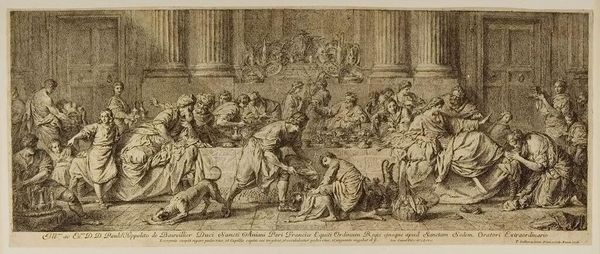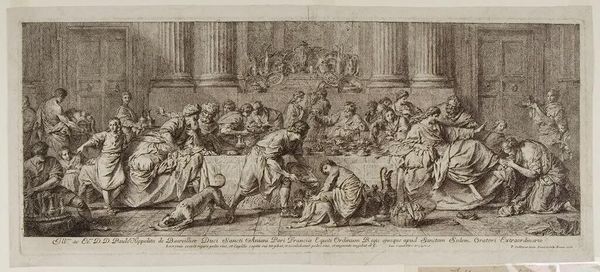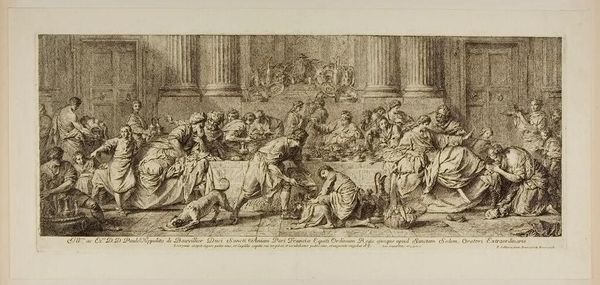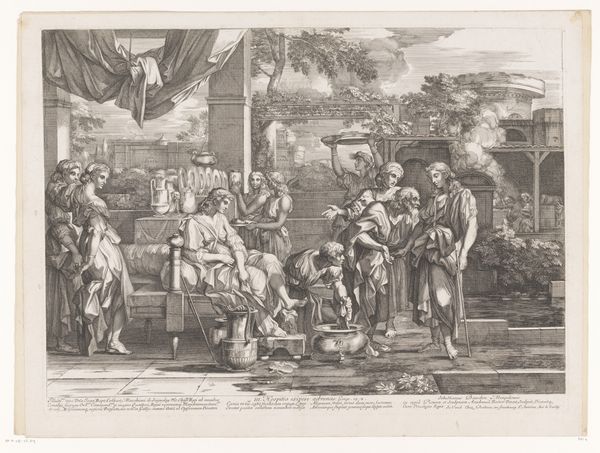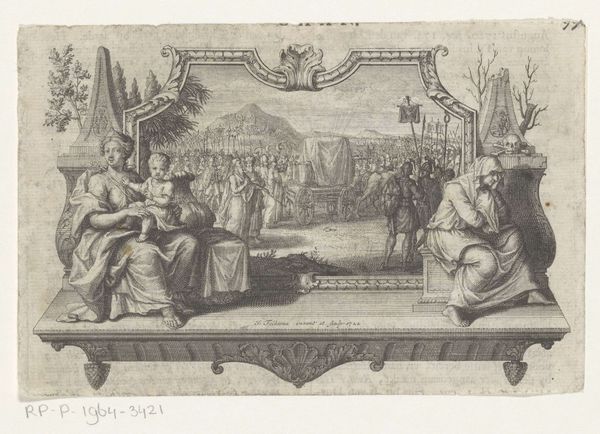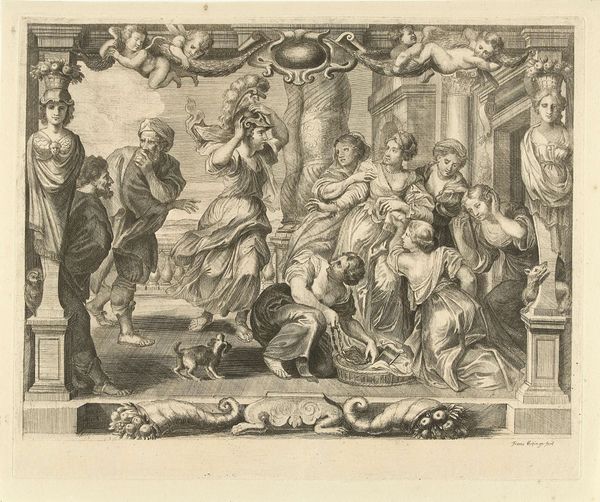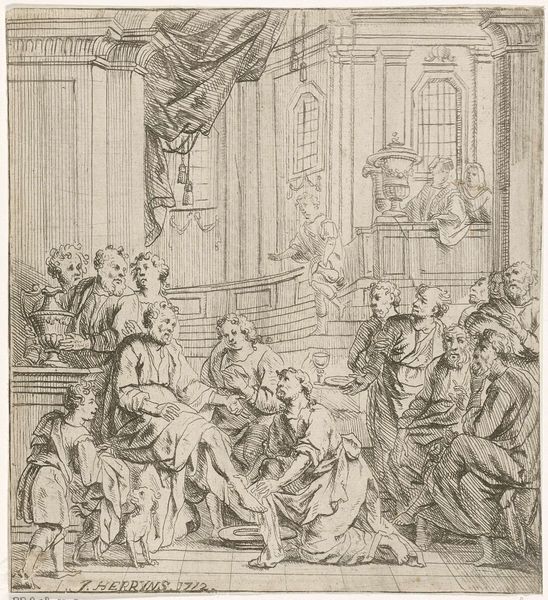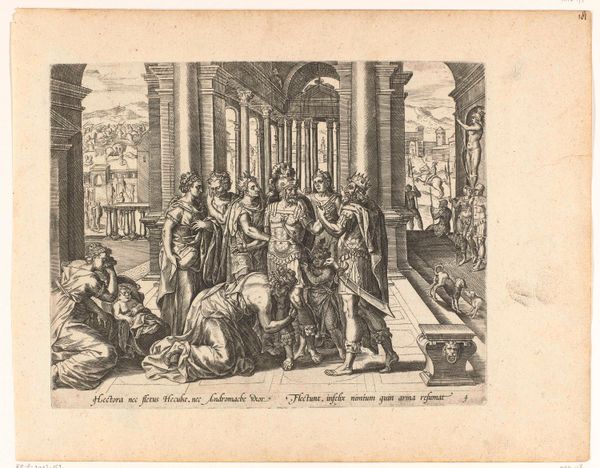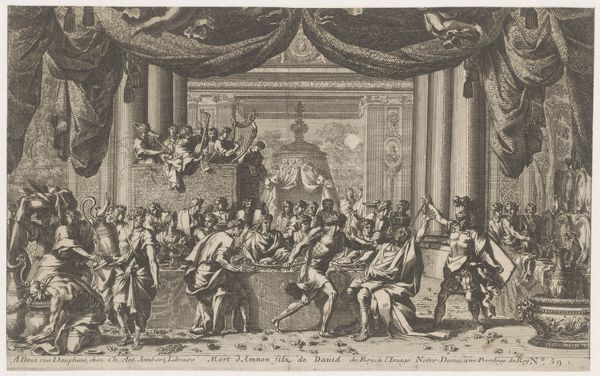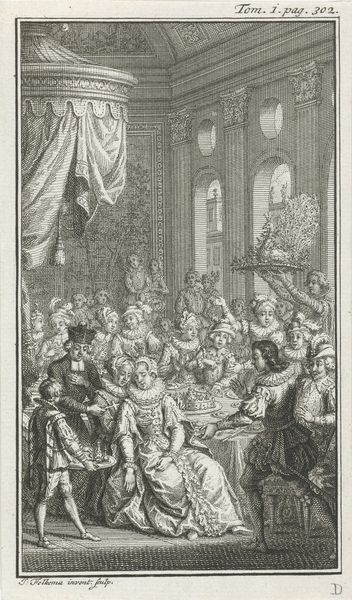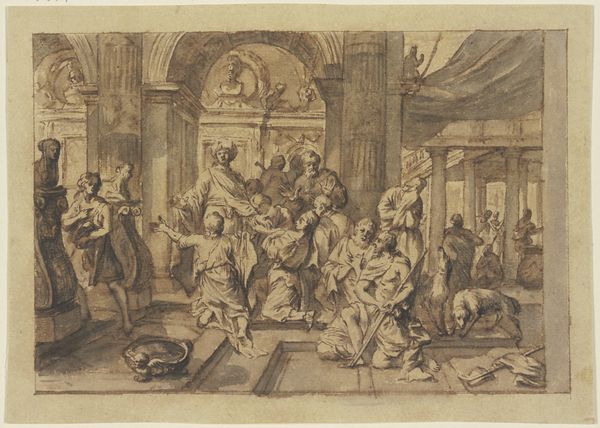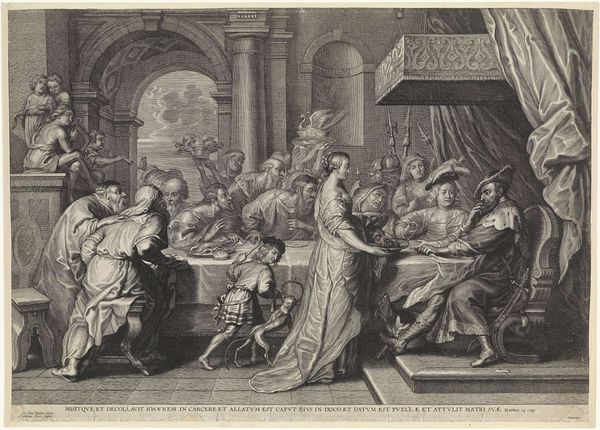
Dimensions: 245 × 615 mm (plate); 255 × 620 mm (sheet)
Copyright: Public Domain
Curator: We're now looking at "Mary Magdalene washing Jesus' Feet," a French baroque etching by Pierre Hubert Subleyras, completed in 1787. Its present home is the Art Institute of Chicago. Editor: My goodness, what a theatrical flurry of lines! So much going on here—like a black-and-white movie still capturing high drama. It's almost overwhelming at first glance, don’t you think? Curator: The dynamism you perceive stems from the elaborate composition and complex deployment of linear hatching and cross-hatching to evoke tonal variation. See how Subleyras employs diagonal lines to activate the foreground where the key scene is playing out. Editor: Absolutely! And it feels as if everyone at that banquet table is caught in a moment of astonishment. Some are curious, some repulsed, it’s such a compelling emotional range. It strikes me that Mary Magdalene isn’t simply washing feet; she is enacting a transformation, and those present are the witnesses. Curator: Indeed. This piece exemplifies baroque narrative art, emphasizing heightened emotion. The stark contrast between the delicate rendering of figures and the imposing architectural setting provides a visually arresting framework for contemplating themes of forgiveness and devotion. Editor: Devotion, yes! It's beautiful and humbling to watch. The light really seems to emanate from Jesus himself as she is kneeling before him. Subleyras really understood light and shadow here, no? Curator: Precisely, notice how Subleyras uses light and shade not merely to describe form but to emphasize the emotional crux of the scene, leading the viewer’s eye from Magdalene’s act of penitence to Jesus' gesture of acceptance. Editor: I suppose what’s most interesting is the quiet intimacy amid all the drama. Thanks to the texture and the sharp detail, this artwork presents an intense human exchange in a setting of monumental scale. I could look at it forever. Curator: The power of etching lies in its ability to capture such moments with layered intricacy. Reflecting on the function of this medium allows us to reexamine notions of history, devotion, and visual expression within a society undergoing massive change.
Comments
No comments
Be the first to comment and join the conversation on the ultimate creative platform.
